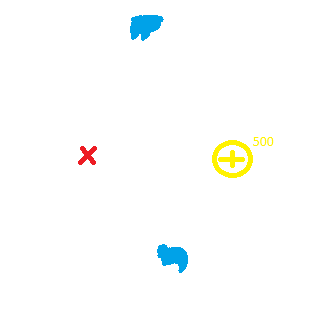I have a large number of rasters I wish to automatically georeference with FME to the "*XY-MT*" projection ("arbitrary metres").
Each raster has a red dot and a yellow dot that are consistent across rasters and can be used for the georeference. I only require rescaling and positioning, not rotation or warping etc, so two points is fine.
I can already extract these two points (RasterExpressionEvaluator -> RasterToPolygonCoercer ... etc).
My problem is, now that I have the raster Column/Row for these two features (the location of those dots in the raster), I don't know what to do. The red feature should be placed at "0,0", and the yellow at "5000,0" in the XY-MT projection (or something similarly consistent).
I've tried using RasterGCPSetter, but the output tif doesn't function as though it's projected (either in QGIS, or within the Inspector).
The RasterGeoReferencer transformer seems to want things I can't give it easily.
Any suggestions for how to do this?
What does FME do with GCP's? The help doesn't say much.
Thanks,
Jonathan




